Building Stockton: A 50-Year History
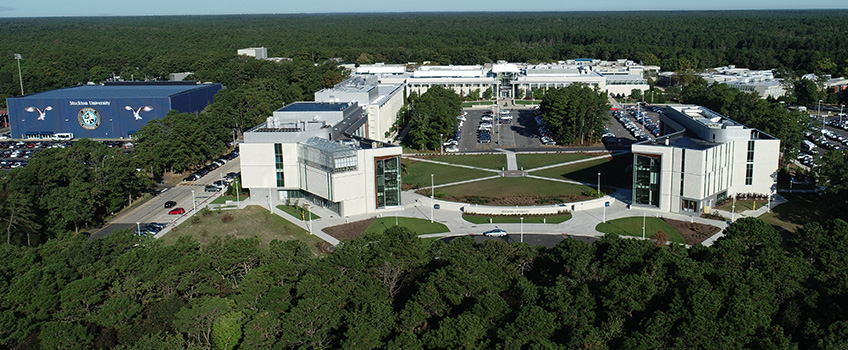
Aerial photo shows the Stockton University Galloway campus in 2020
Galloway, N.J. - Walk onto any Stockton University campus and find yourself amid nature as well as higher education.
A lot has changed in the last 50 years at Stockton. As enrollment expanded, so did the campus footprint, first in Galloway and later in Woodbine, Hammonton, Manahawkin and Atlantic City.
In 2022, the campuses present a mix of old and new, of natural and manmade.
Many stone sidewalks and dirt paths have been well planned out in the last five decades to take students where they need to go: to dorms, the campus center, classrooms and to parking lots and bus stops.
But true to their roots in the Pinelands National Reserve, the buildings at Stockton are designed to complement their environment, not compete with it.
A December 1972 article in Planning for Higher Education talks about the phased construction of the new College designed to permit “orderly growth” for a campus of 7,500 students. Here’s how Stockton developed:
- Construction Approved: Construction for a campus in Galloway Township got the go-ahead in November 1968 when legislators in New Jersey approved a $202.5 million capital construction bond issue. The bond issue included $15 million earmarked to build a state college in South Jersey. Among the most influential supporters bringing a four-year college to the southern part of the state were Elizabeth Barstow Alton, one of the original Board of Trustees, and State Sen. Frank S. “Hap” Farley. Finding a location was significant for the Stockton college project.
- In 1969, when legislation establishing the school was passed, a 1,600-acre tract was
chosen for Stockton in the heart of the Pinelands in the Pomona section of Galloway
Township, Atlantic County. Ground was officially broken on the new College campus
in Galloway Township on Dec. 9, 1970. The first shovel went into the ground near what
is now A Wing.
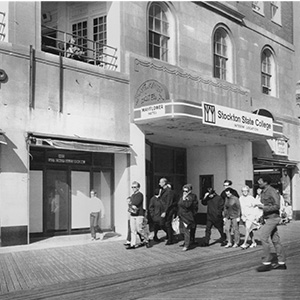 The new buildings weren’t ready for the incoming class in September 1971, so classes
were held at the Mayflower Hotel in Atlantic City. There were 1,000 students enrolled
in the first academic year at the Mayflower, along with 97 staff and 60 full-time
faculty. By December 1971, Stockton students and faculty were able to move into the
first phase of the new campus construction.
The new buildings weren’t ready for the incoming class in September 1971, so classes
were held at the Mayflower Hotel in Atlantic City. There were 1,000 students enrolled
in the first academic year at the Mayflower, along with 97 staff and 60 full-time
faculty. By December 1971, Stockton students and faculty were able to move into the
first phase of the new campus construction.- First Academic Year: The first full academic year at the new Galloway campus was marked in September 1972
and included the initial occupancy of A Court in the campus student housing apartments
by 128 students. By February 1973, the opening of the Phase II of the campus buildings,
including F-H wings, took place.
- On June 3, 1973, Stockton’s first graduating class took part in ceremonies as 290
students received diplomas. The first four-year class followed on June 8, 1975 with
475, receiving their degrees. Stockton alumni now totaled 1,106. The following month,
completion of Phase III (through L Wing) took place.
- In October 1976, the 550-seat Performing Arts Center opened, bringing cultural opportunities and entertainment previously unavailable to the region. Audiences have been thrilled by the world-class concerts, lectures and productions ever since.
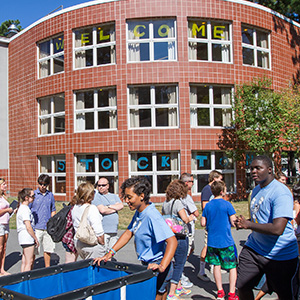 Additional wings were added as the College enrollment climbed past 5,000 students.
Housing II opened in November 1981.
Additional wings were added as the College enrollment climbed past 5,000 students.
Housing II opened in November 1981.- The N Wing College Center opened in February 1983.
- Housing III, which made Stockton the most residential of the state colleges, opened in 1986.
- The Residential Life Center opened in April 1987. It was later named for Ann F. Townsend.
- The Lakeside Lodge opened in 1988, creating a social space for students and faculty.
- In 1990, the Holocaust Resource Center opened at Stockton in Galloway. It was one of the first such centers hosted by a public college. The center included a library and archive of video and audio taped histories of Holocaust survivors and artifacts from the Holocaust. It became a hub for the school’s pioneering role in Holocaust and Genocide education. This role would grow to include the nation’s first Master of Arts program in Holocaust and Genocide Studies (1999) and conducting teacher training in Holocaust Education for thousands of teachers.
- By December 1993, all the buildings comprising the academic complex went online with a new environmentally friendly, state-of-the-art geothermal heating and cooling system, saving more than $300,000 each year in fuel costs.
- In October 1995, the newly expanded and renovated library was dedicated.
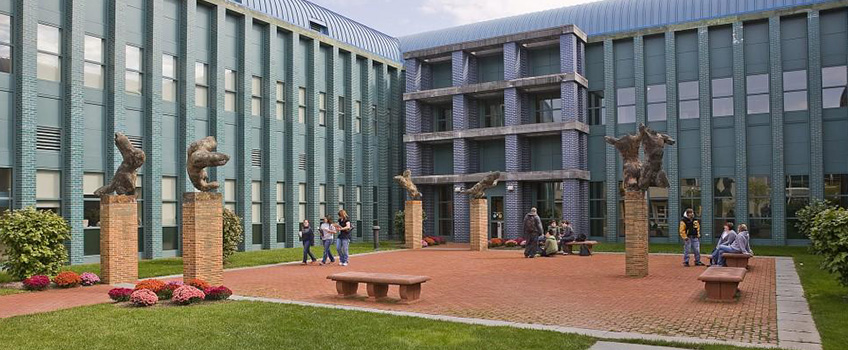
In April 1996, a new $9.6 million Arts and Sciences Building, designed by renowned architect Michael Graves, opened and a resolution passed for the construction of a new multi-purpose Sports Center.
- The $17-million Sports Center opened in May 2000. The project also included upgrades to athletic fields, lighting of the fields, a new running track and other amenities for sports and recreational purposes. In addition to athletics, the site becomes the location for Commencement and other large campus events. In 2000, Stockton graduated a record 850 students, including the first two-degree recipients in the nation’s first Master of Arts in Holocaust and Genocide Studies.
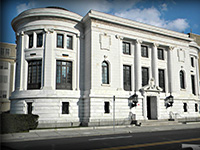 Stockton also entered a partnership with the Casino Reinvestment Development Authority
(CRDA) in August 2002 to transform the historic Carnegie Library building in Atlantic
City into a satellite campus. CRDA invested more than $6 million in renovations and
improvements, and Stockton was to pay $1 in rent on the building for each of the first
five years. As a result of the agreement, the historic Beau-Arts-style building, an
Atlantic City landmark since 1904, was saved from the wrecking ball. Stockton used
the site until the opening of the new Atlantic City campus in 2018. Carnegie was returned
to the City of Atlantic City in 2022.
Stockton also entered a partnership with the Casino Reinvestment Development Authority
(CRDA) in August 2002 to transform the historic Carnegie Library building in Atlantic
City into a satellite campus. CRDA invested more than $6 million in renovations and
improvements, and Stockton was to pay $1 in rent on the building for each of the first
five years. As a result of the agreement, the historic Beau-Arts-style building, an
Atlantic City landmark since 1904, was saved from the wrecking ball. Stockton used
the site until the opening of the new Atlantic City campus in 2018. Carnegie was returned
to the City of Atlantic City in 2022. - In 2004, The Southern Regional Institute (SRI) and Educational Technology Training Center (ETTC) moved to a building in Mays Landing, then later to the Parkway Building in Galloway, which also houses the Speech and Hearing Clinic.
- Alton Auditorium: The former A Wing Lecture Hall was rededicated as the Elizabeth Alton Auditorium. An extensive renovation of the Alton Auditorium was completed in 2009.
- In 2007, The College established the William J. Hughes Center for Public Policy to
foster inquiry into the vital questions of ethics and civility and an ongoing dialogue
among state leaders and citizens.
- Stockton develops a partnership in 2010 with the Noyes Museum in Absecon.
- The College purchases the historic Seaview Resort in Galloway. Part of the site is used for student housing but is later sold in 2018 to KDG Capital LLC of Florida when the new Atlantic City campus, which includes a residential complex, opens.
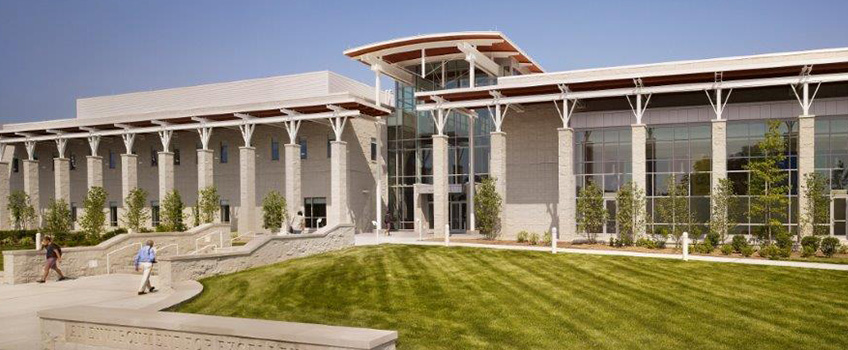
-
The 154,000-square-foot Campus Center officially opened its doors on Commencement Day, May 7, 2011.
- Stockton opens the Manahawkin Instructional site in 2012. The site is expanded in
2018 with nursing simulation labs and exam rooms and houses the Accelerated BSN in
Nursing program.
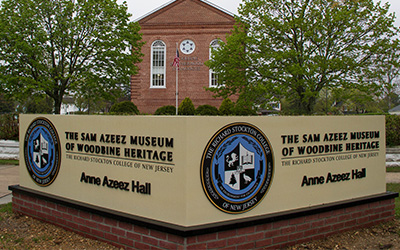 The Sam Azeez Museum of Woodbine Heritage is donated to Stockton in 2012 by founder
Michael Azeez as part of a partnership and the largest-ever gift to the College. The
Anne Azeez Hall is added to the site with a ceremony April 29, 201
The Sam Azeez Museum of Woodbine Heritage is donated to Stockton in 2012 by founder
Michael Azeez as part of a partnership and the largest-ever gift to the College. The
Anne Azeez Hall is added to the site with a ceremony April 29, 201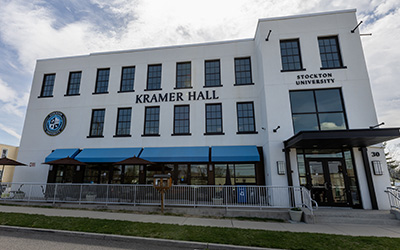 3.
3.- In November 2013, Stockton opened the Noyes Arts Garage of Stockton College in Atlantic City.
- Kramer Hall, the College’s Hammonton Instructional Site, opened on January 31, 2013. The building is named after Lynn and Charles Kramer for their many years of service and philanthropic support.
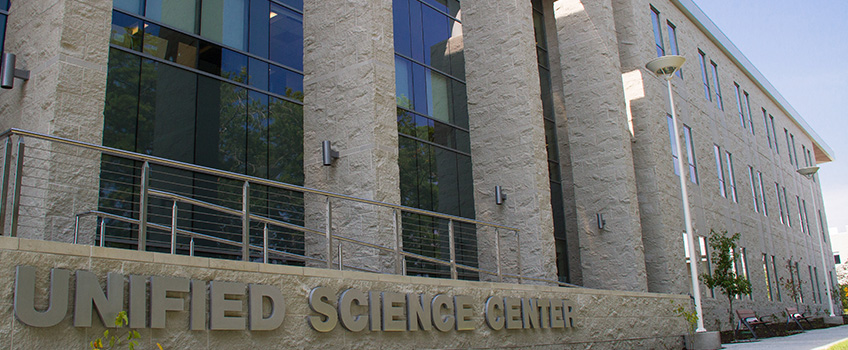
-
Stockton dedicated its 66,350-square-foot $39.5 million Unified Science Center I with a ribbon-cutting ceremony on Sept. 18, 2013.
- Faith and reason - two pillars in the life and work of Dr. Demetrios J. Constantelos, came together in October 2014 as Stockton, in partnership with the Interdisciplinary Center for Hellenic Studies, dedicated the Constantelos Hellenic Collection and Reading Room in the library. The room is open to students, faculty and the community and acts as the statewide repository for the New Jersey Greek-American Oral History Project.
- 2015 Women’s Gender & Sexuality Center Opens: In 2015, Stockton University establishes the Women’s, Gender & Sexuality Center, which will provide advocacy and outreach to students.
- Stockton University became New Jersey’s newest university of higher learning on Feb.
18, 2015, when the Board of Trustees voted to change Stockton’s official designation
and name from that of a college to a university.
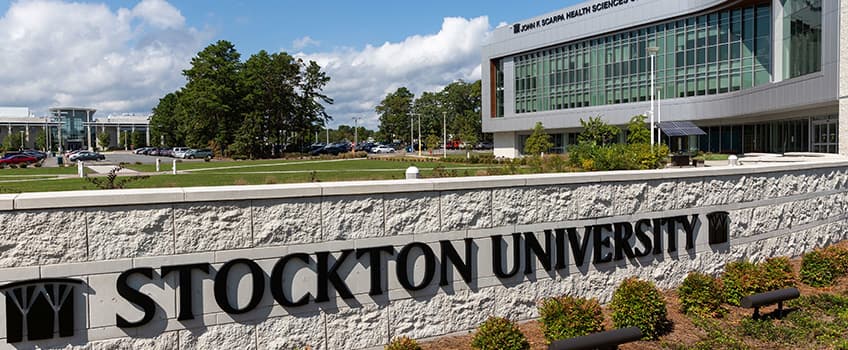
-
The new Unified Science Center II and the Health Sciences Center are dedicated in Spring 2018 as part of the project to create an Academic Quad. The new Stockton Atlantic City campus opens in September 2018 featuring an Academic Center and a Residential Complex for 540 students on the Boardwalk.
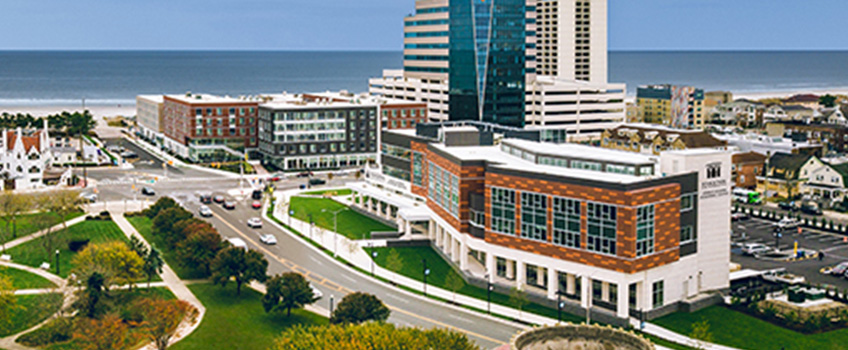
-
The new Veterans Center opens in 2019 and includes a larger lounge area for veterans as well as the Office of Veterans and Military Services.
- In 2020 ground was broken for a second new residence hall in Atlantic City, scheduled to open in Fall 2023.
- Compiled by Stephanie Loder and Diane D'Amico


